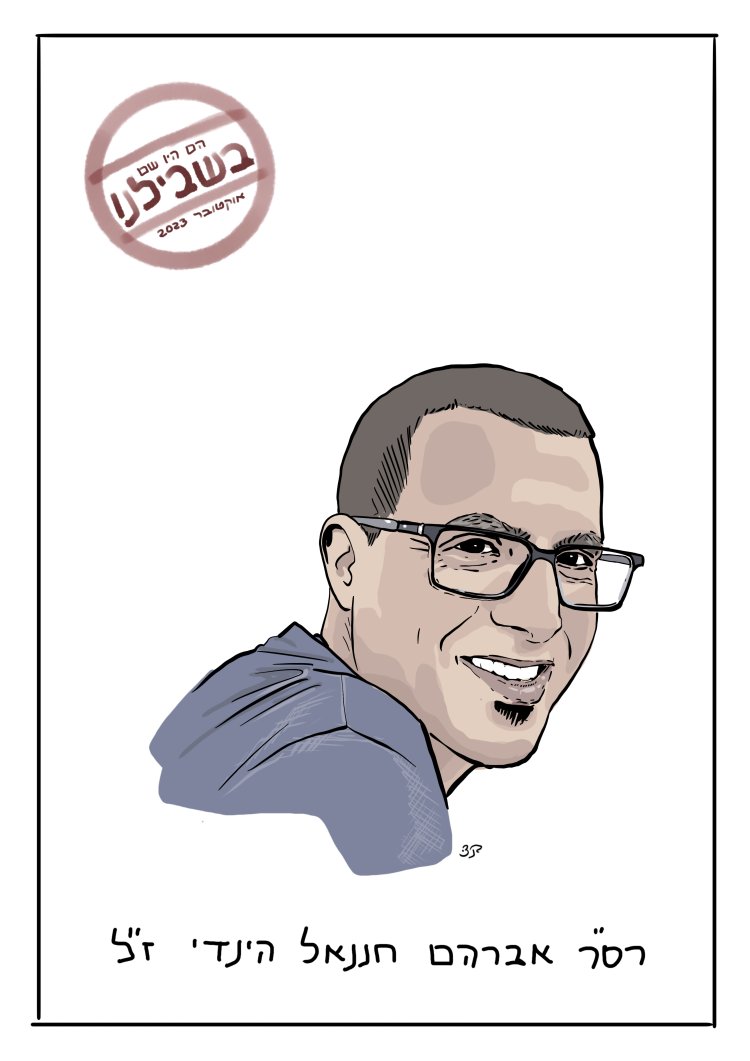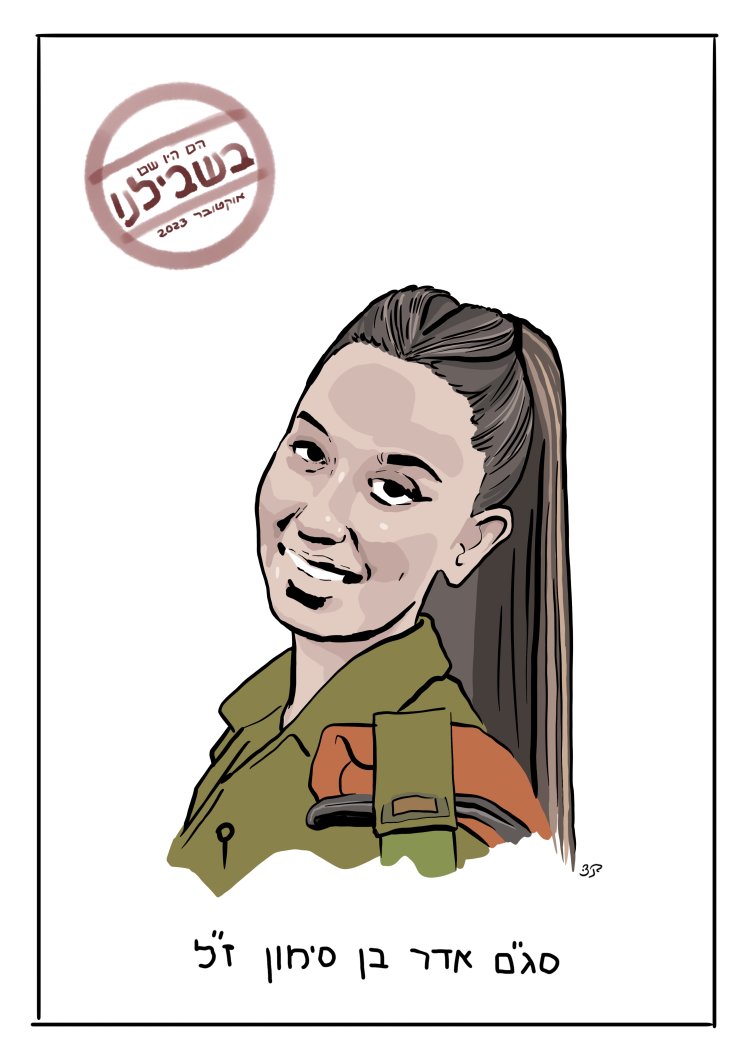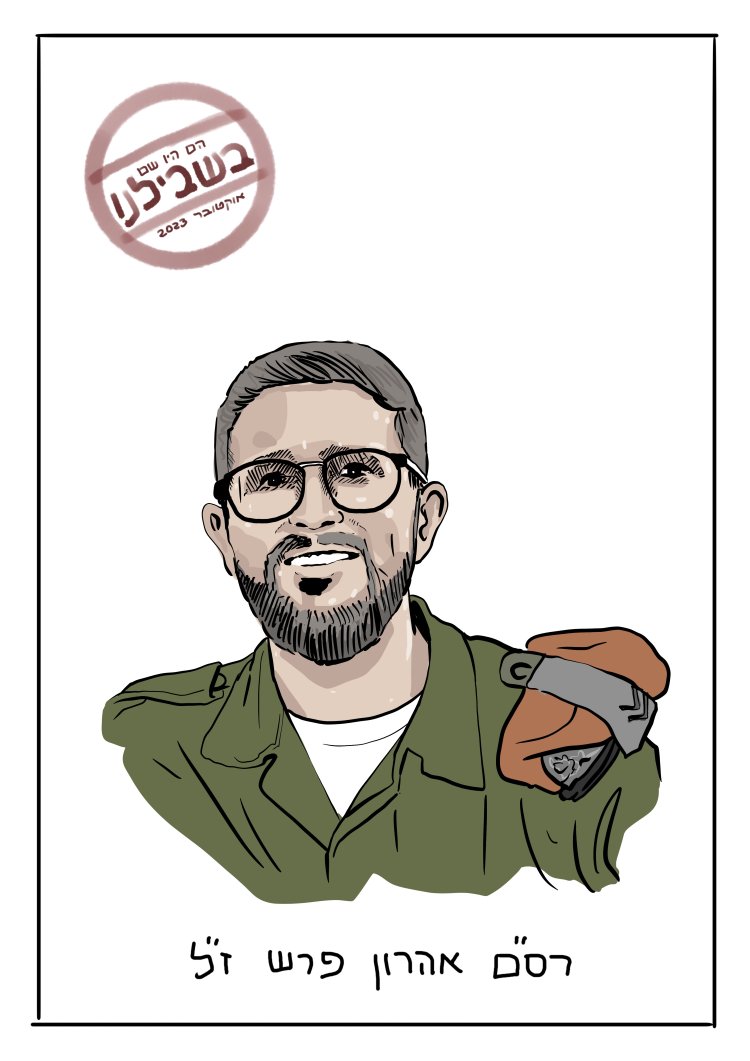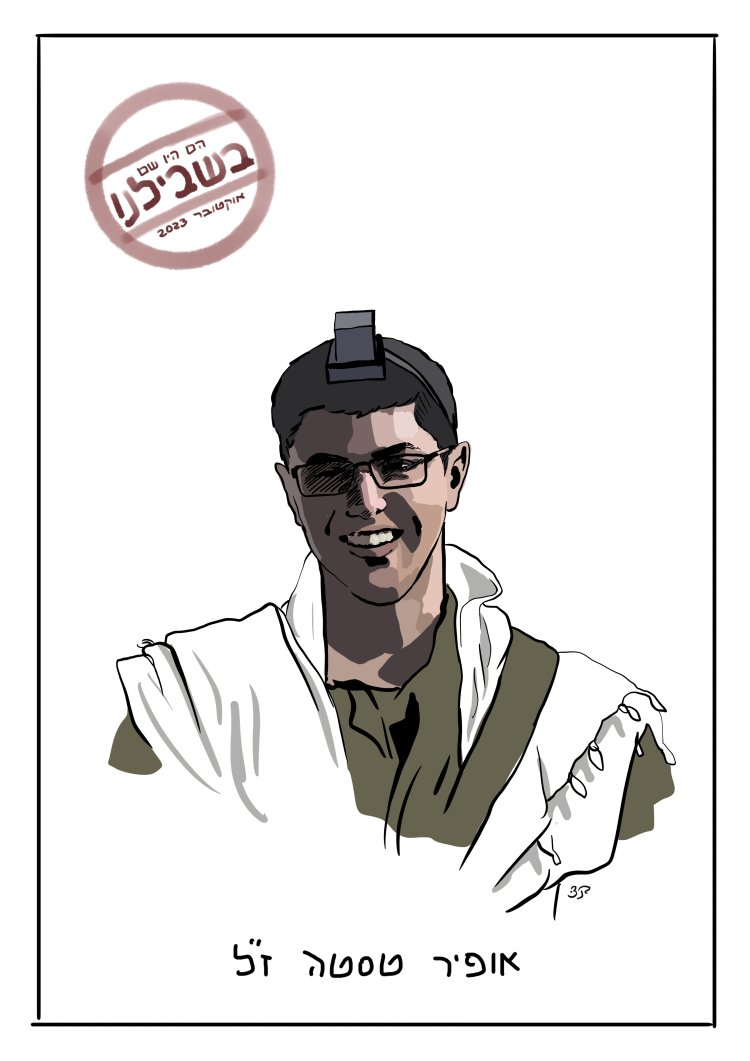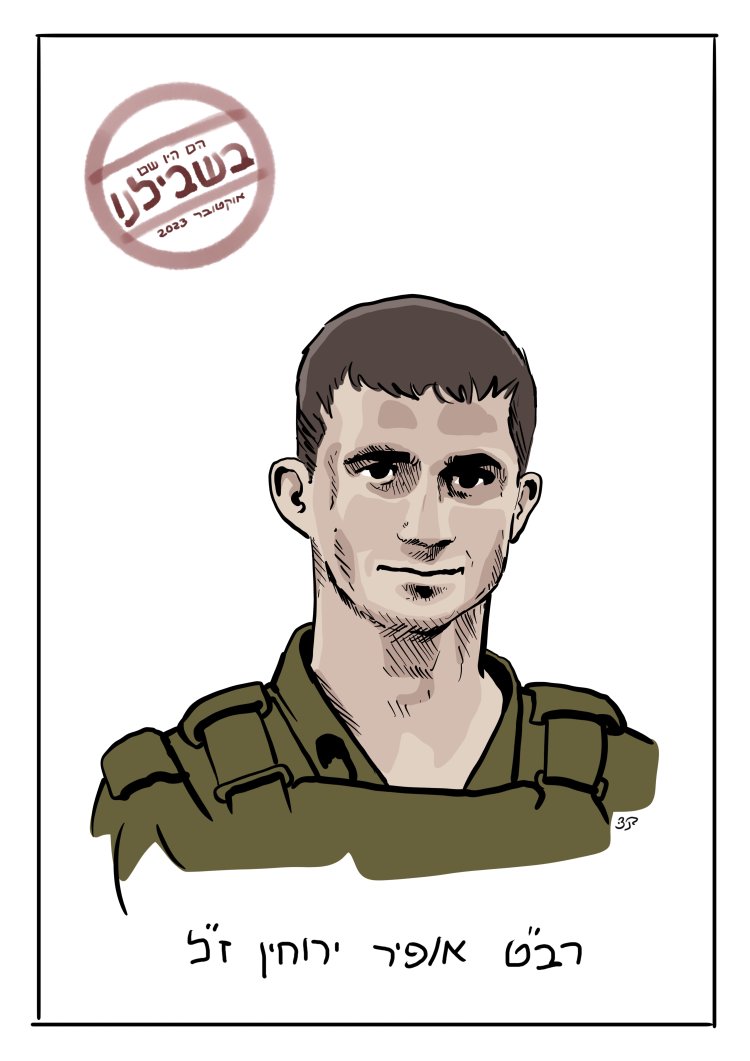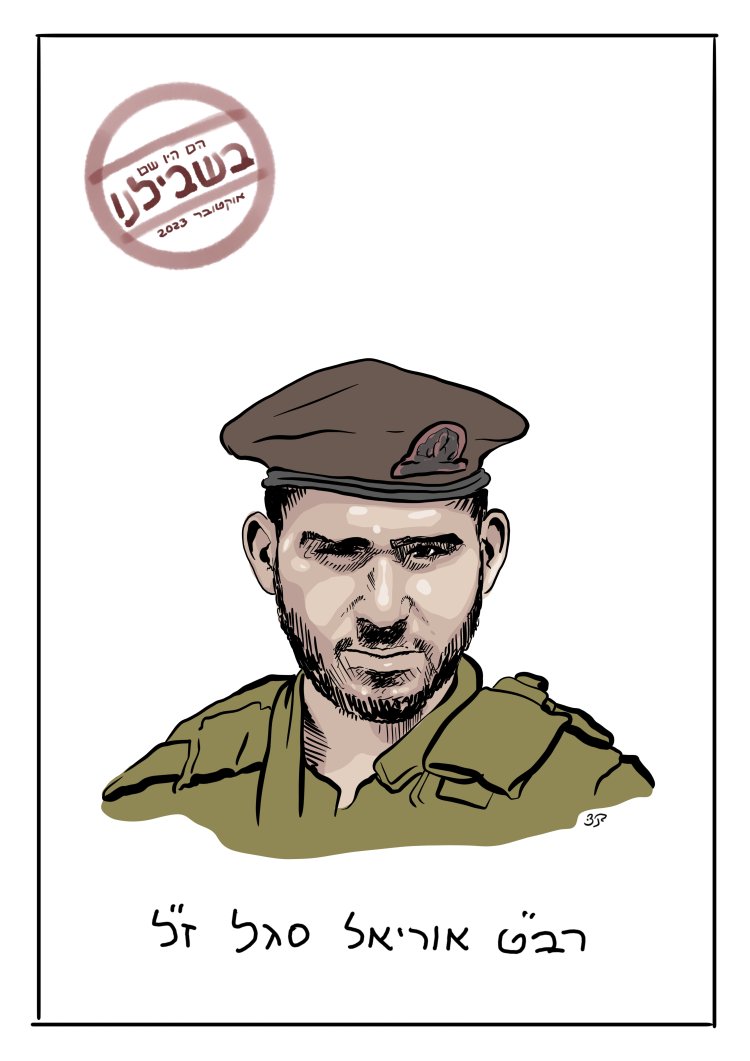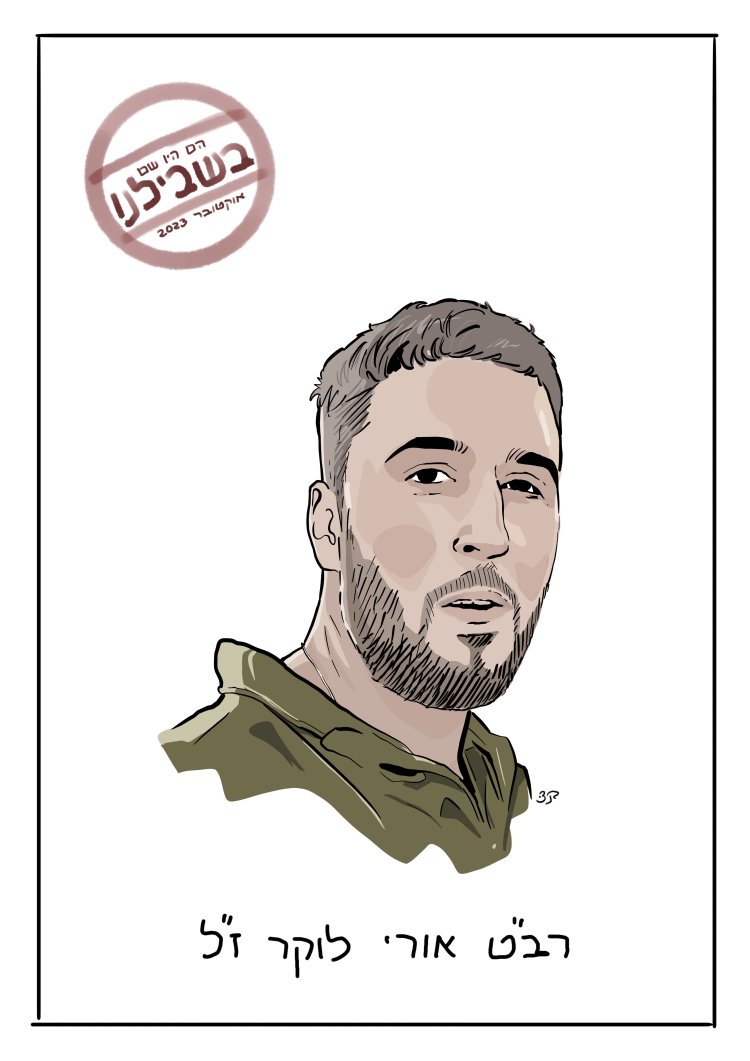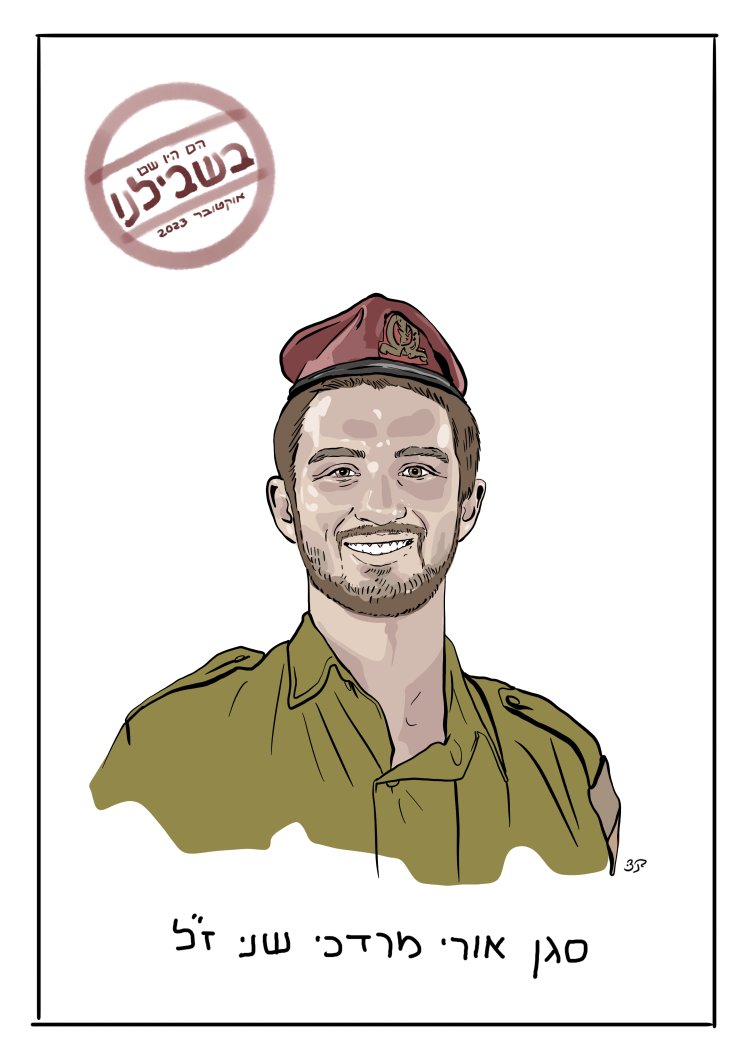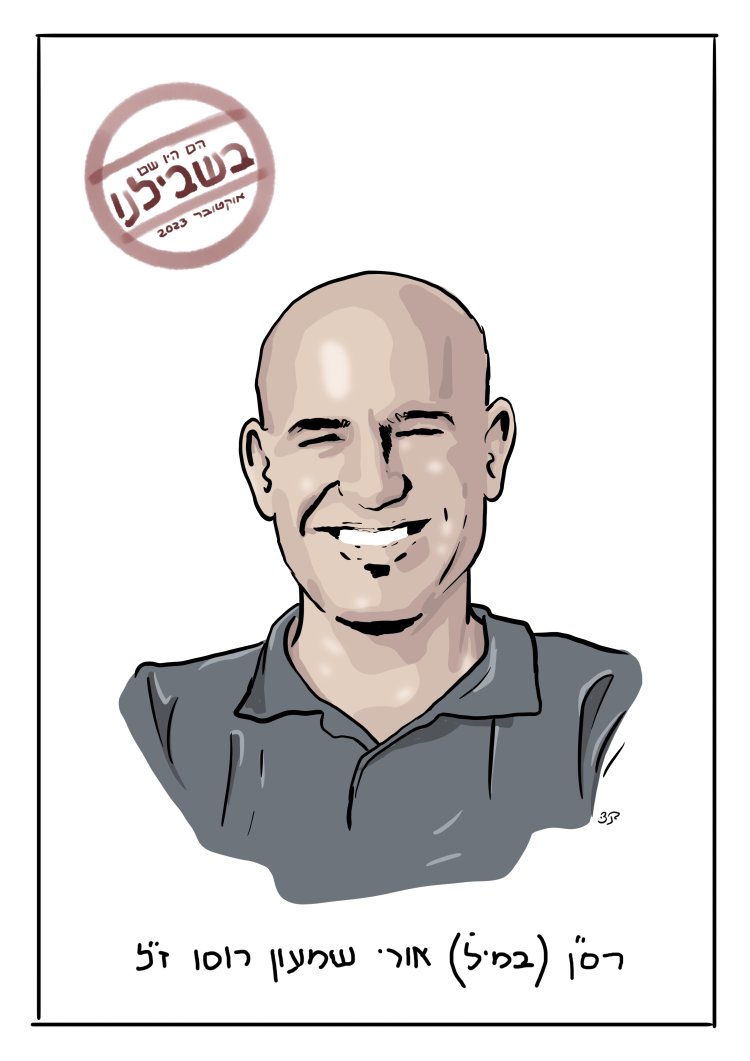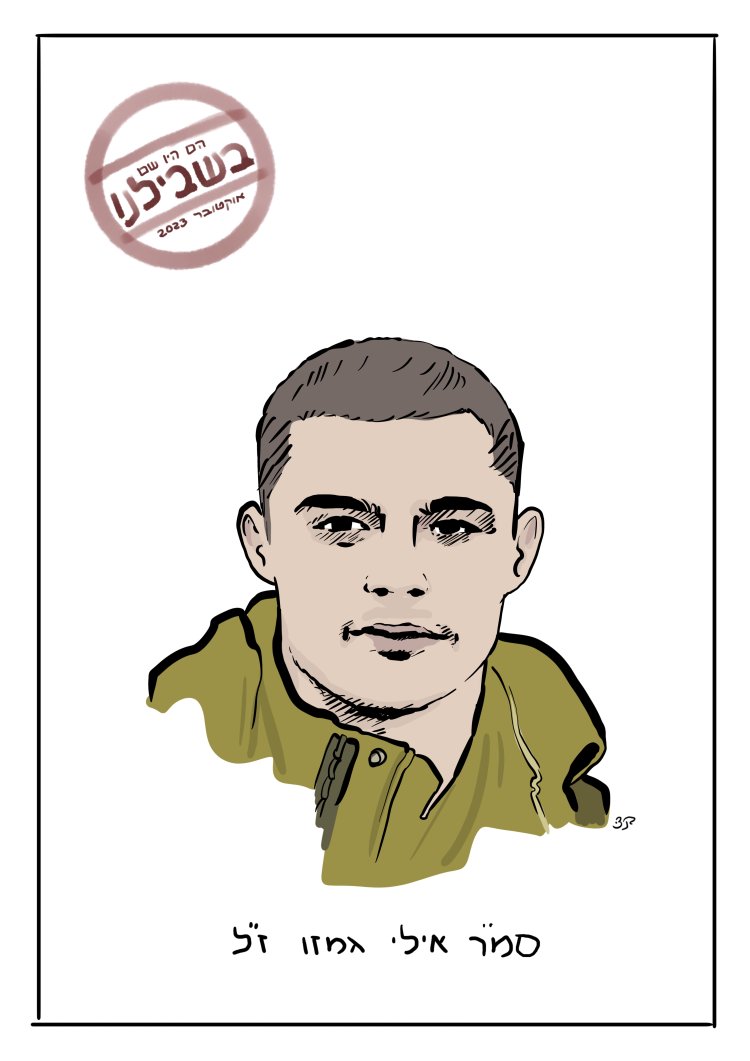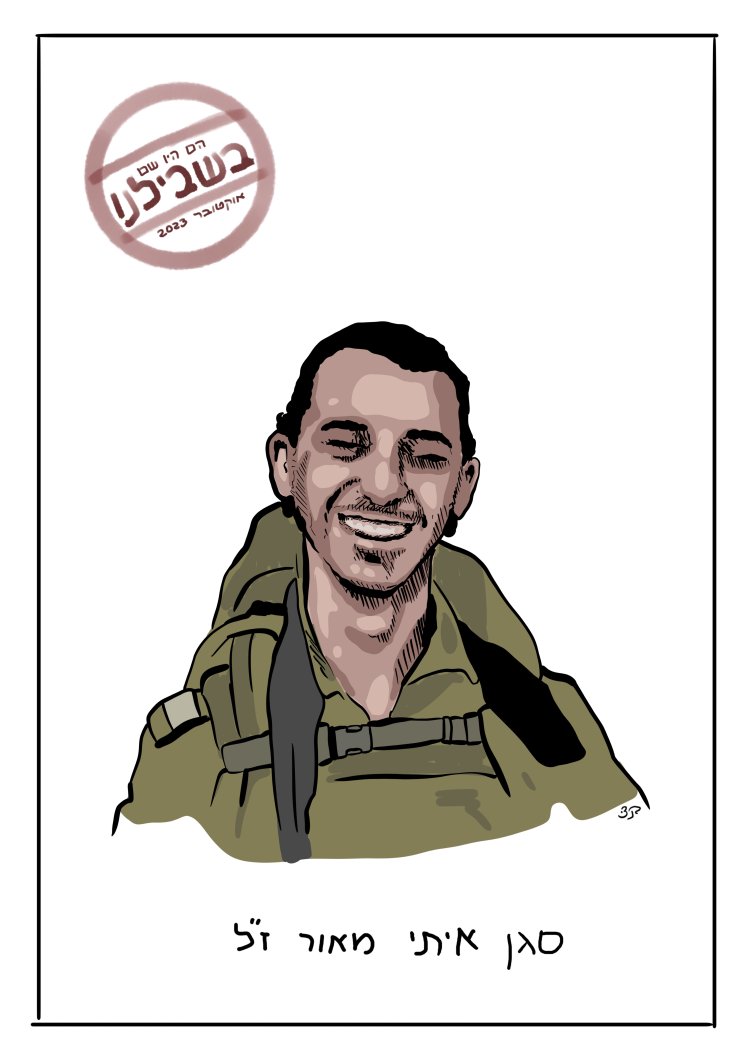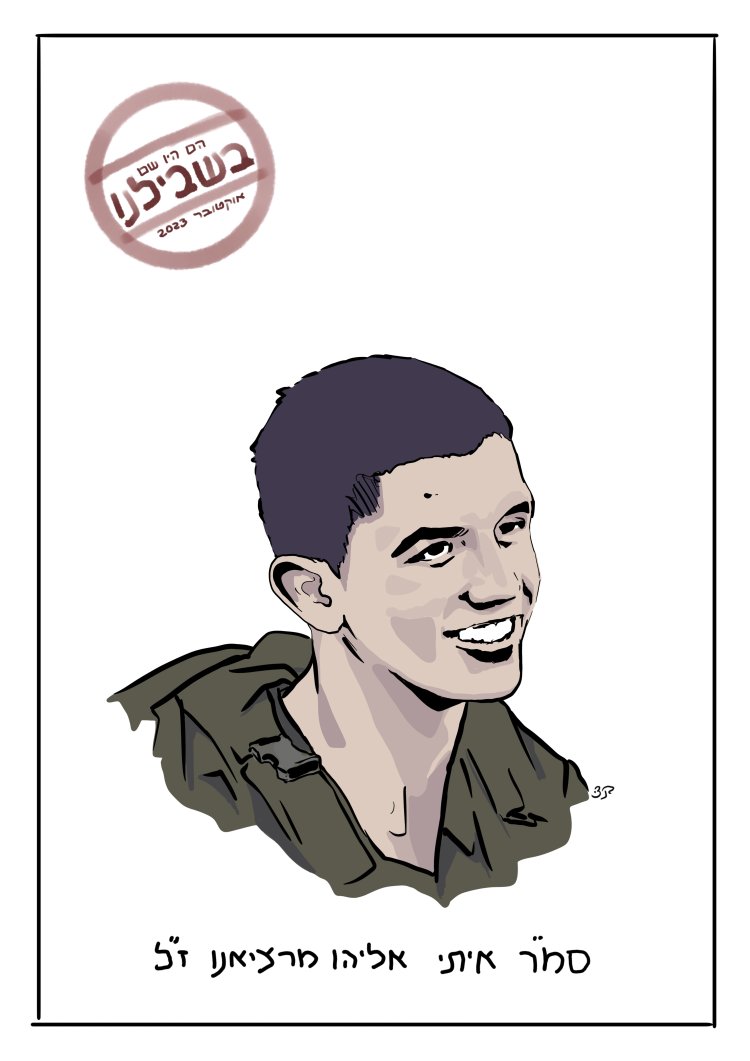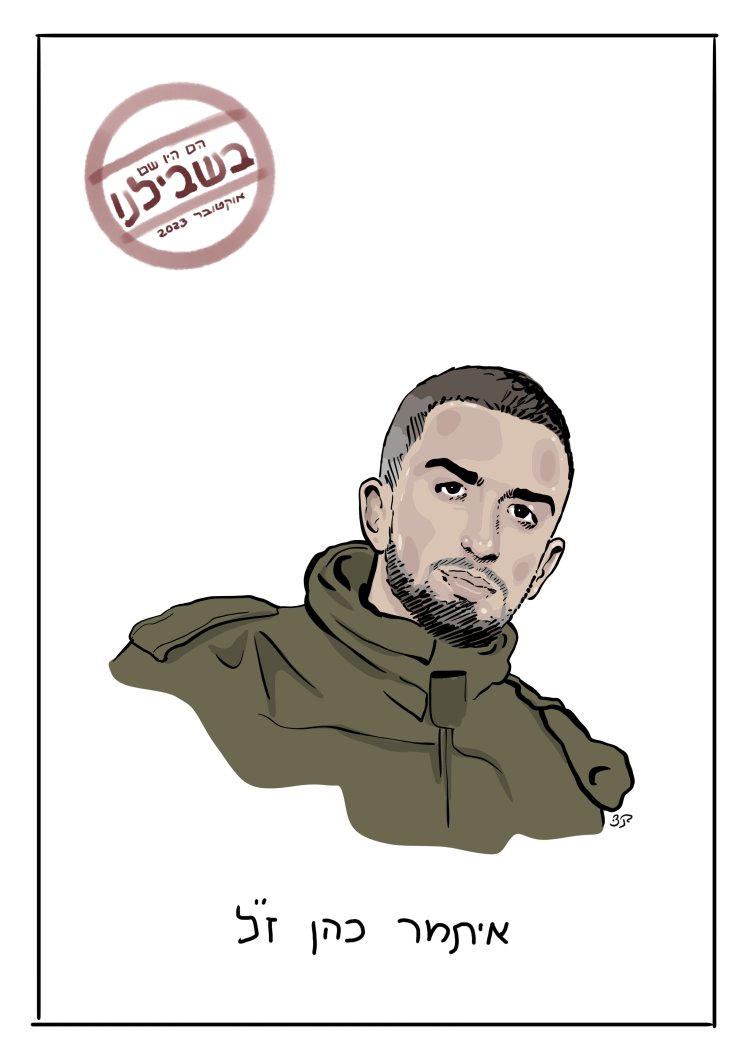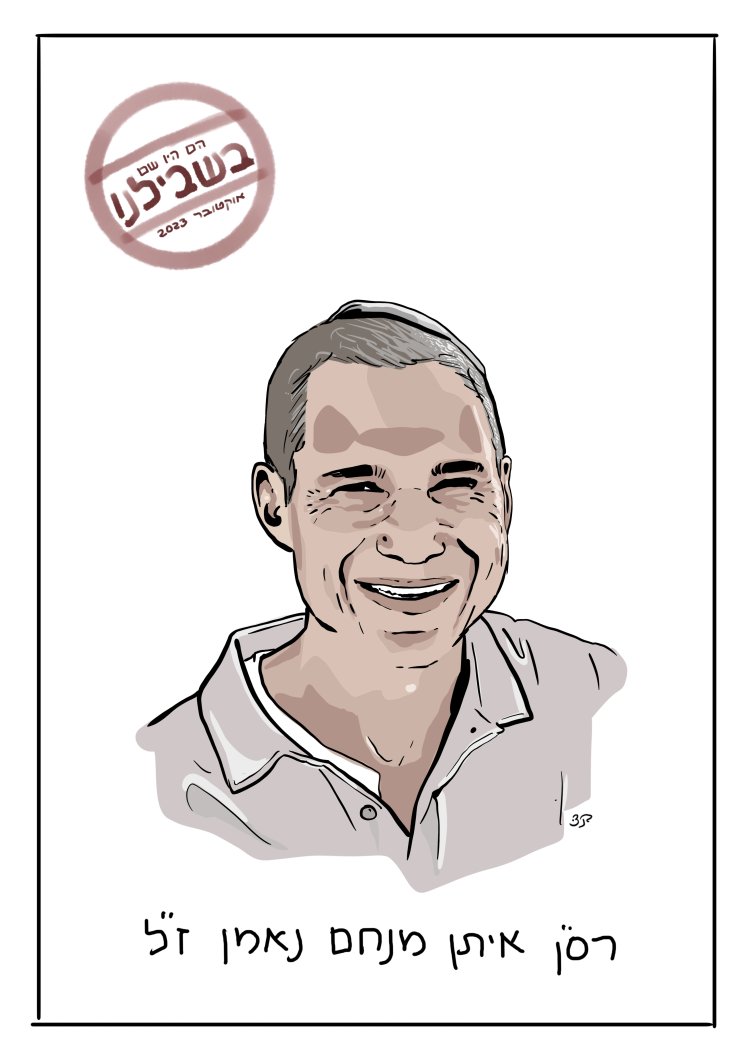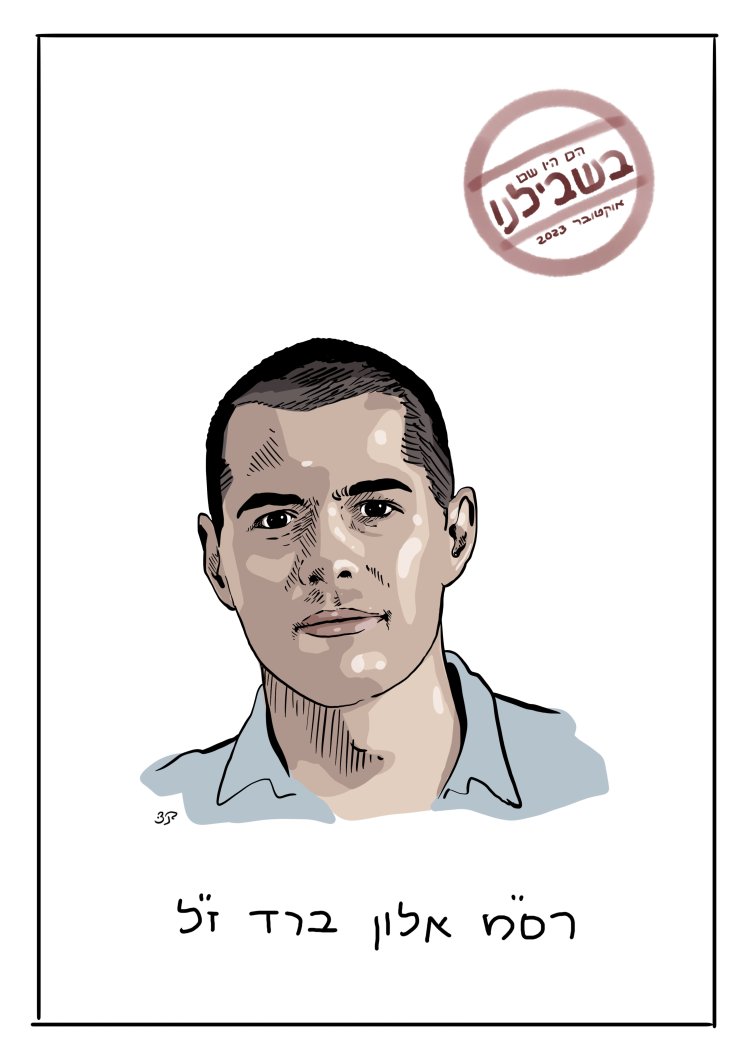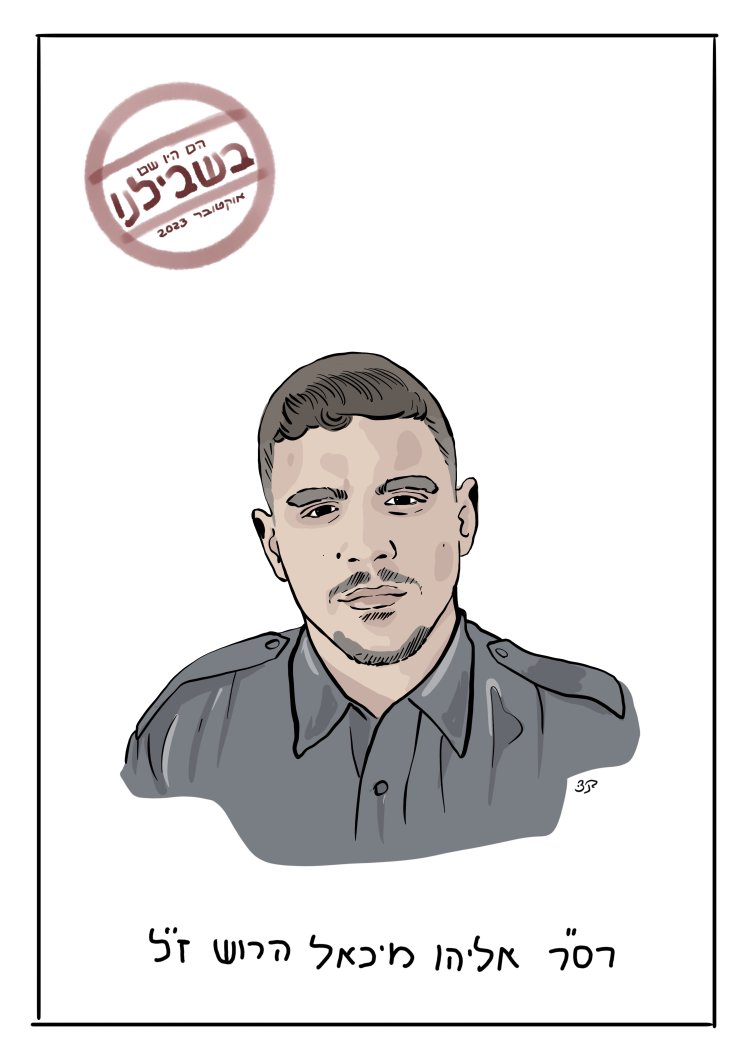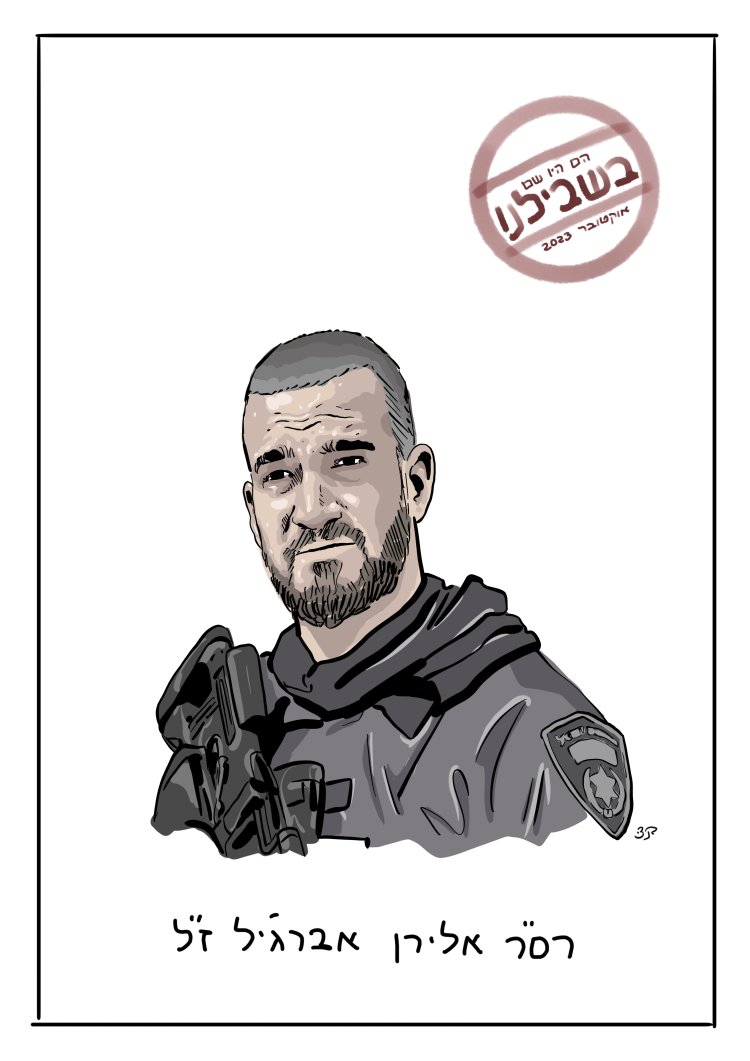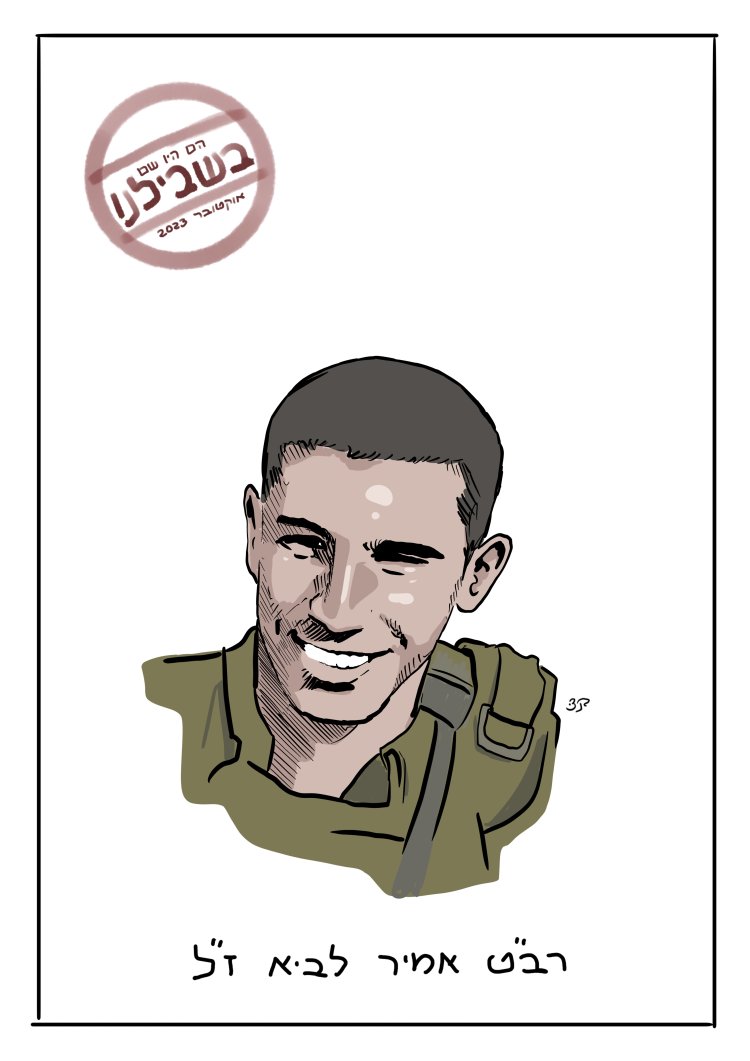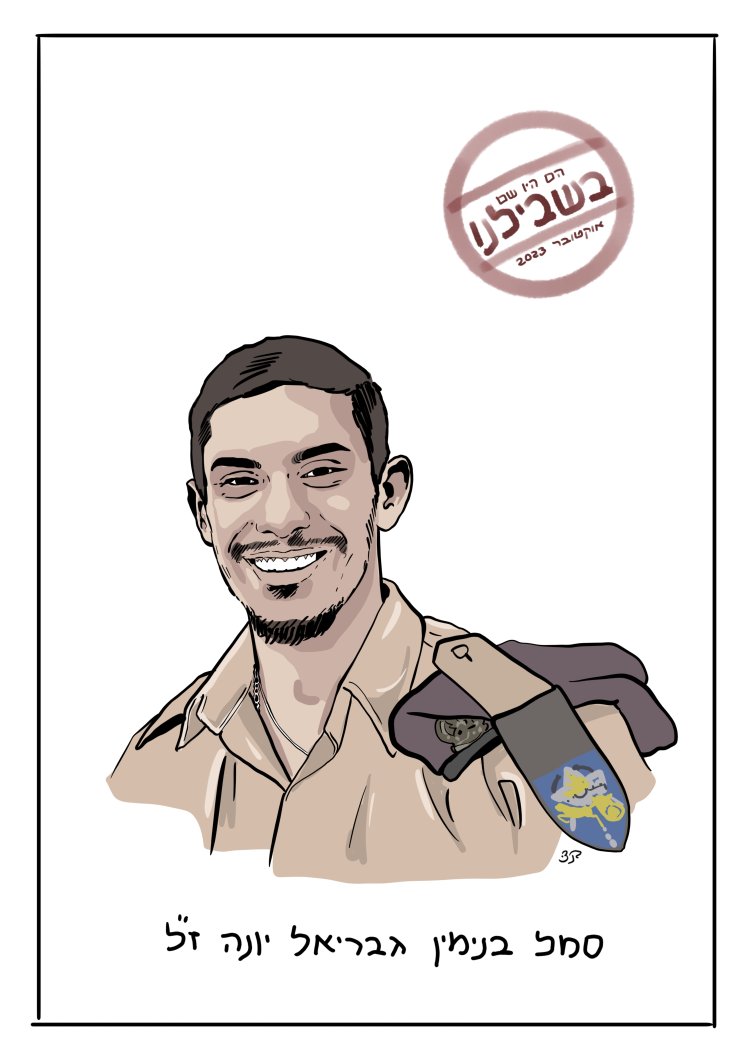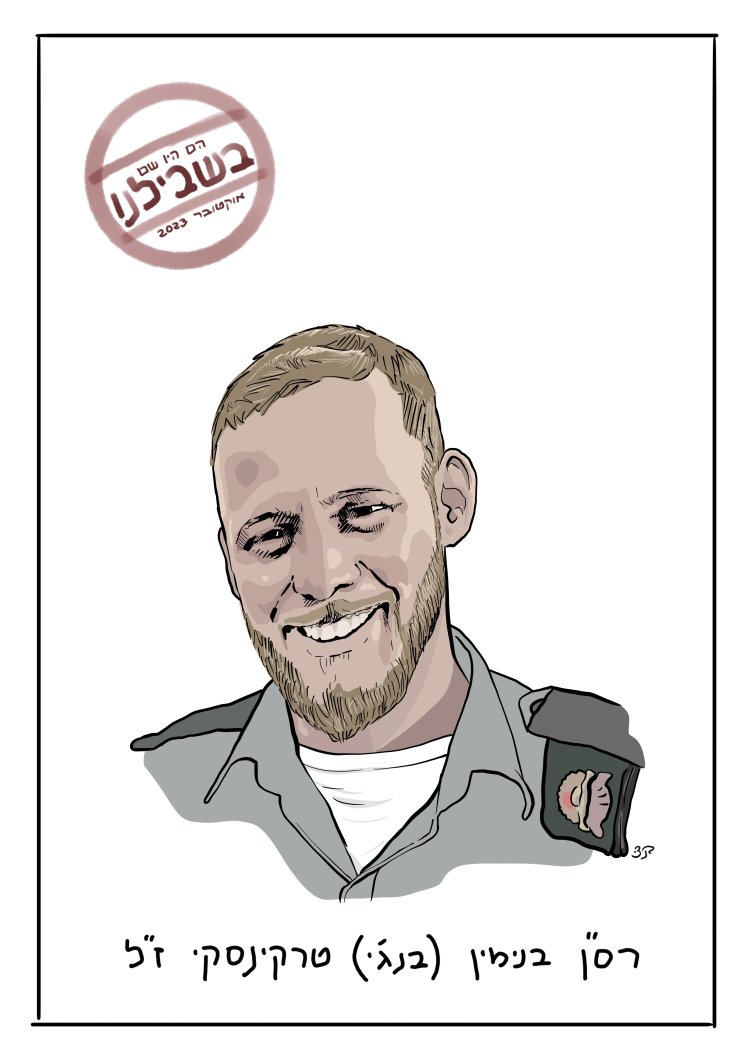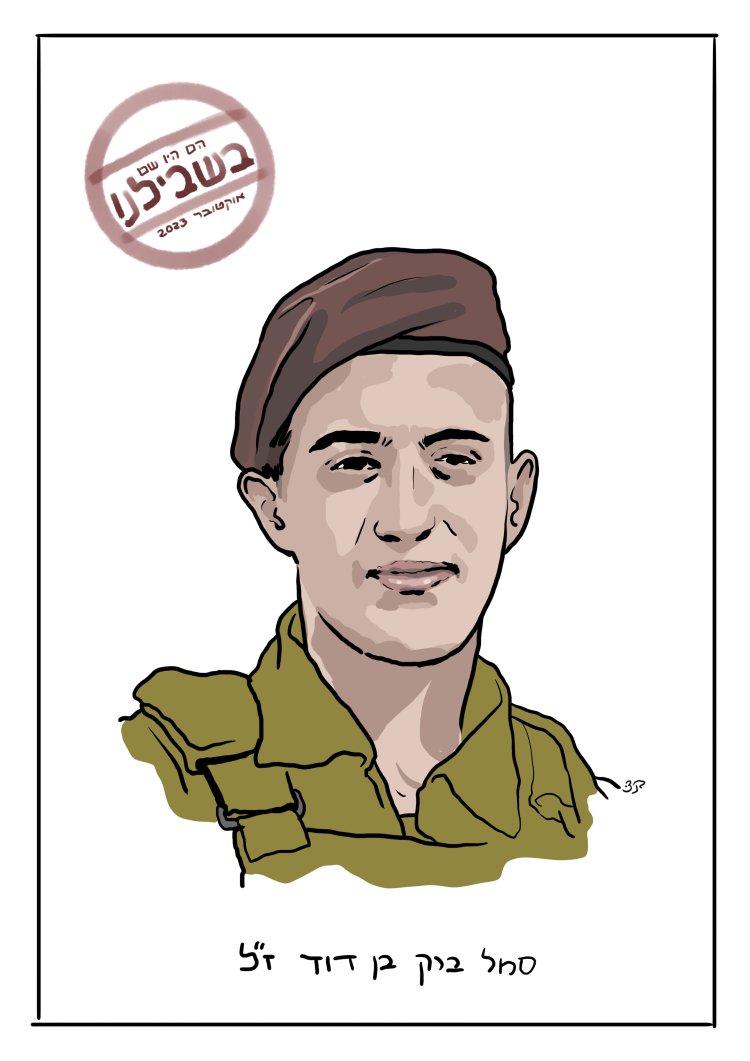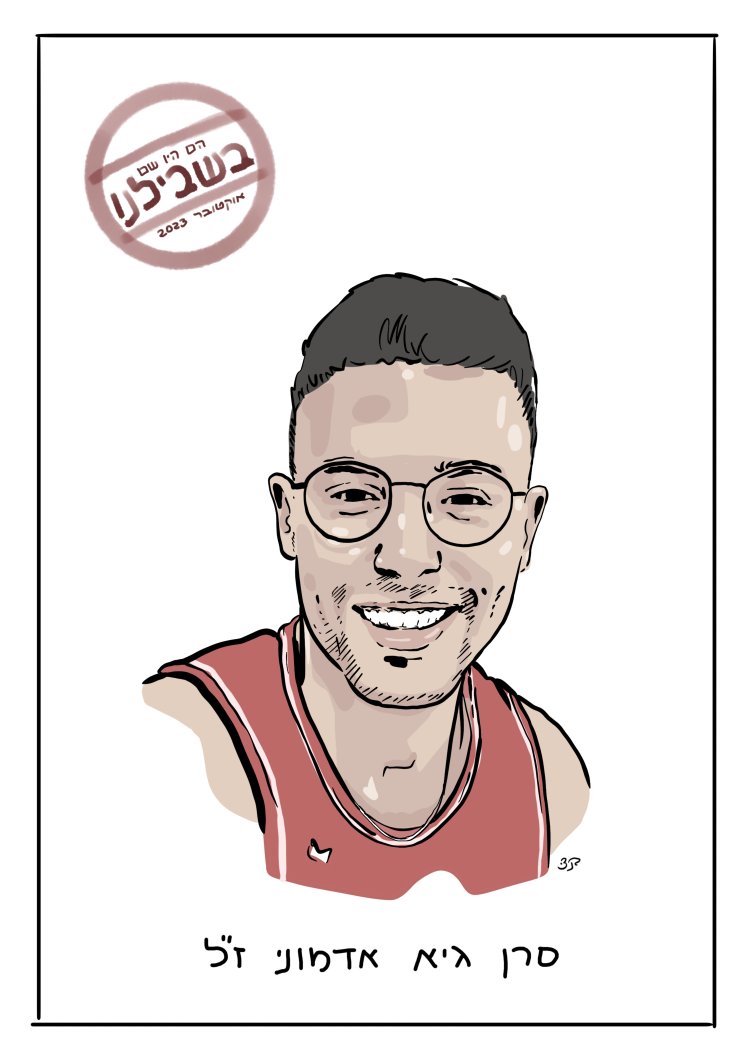The Artist Who Painted Fallen Soldiers: "I Draw and Cry, Cry and Draw"
When Benzi Wollman started illustrating the faces of fallen soldiers, he never imagined his project would expand to 90 portraits, with dozens more requests to fulfill. In a special commemoration project, he showcases paintings of soldiers who did not return from battle, affirming: "This is the least I can give."
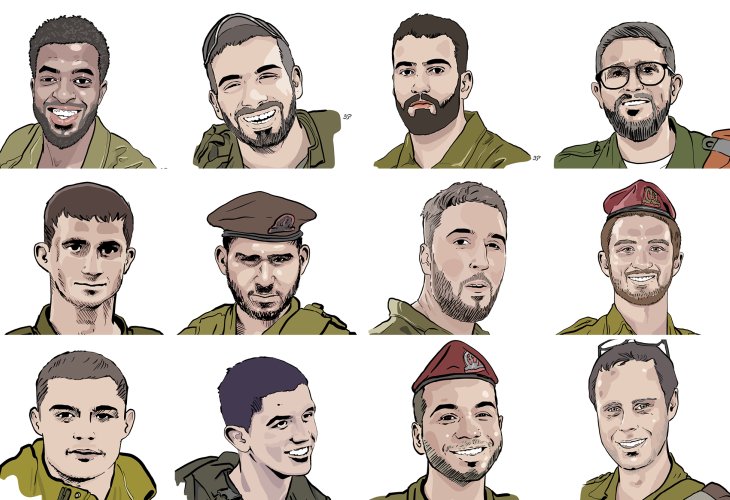
"They Were There for Us." This is the chilling and precise name chosen by Benzi Wollman, a 33-year-old Orthodox illustrator, for his memorial project illustrating the characters of the fighters who fell in the "Iron Swords" war.
Many know Wollman from his regular illustrations in the "Family" newspaper, as well as from the "Ligdol" book series by Sivan Rahav Meir, among his other works. He also has a special project called "Daily Page Illustrations," where he publishes a daily drawing appropriate for the studied page.
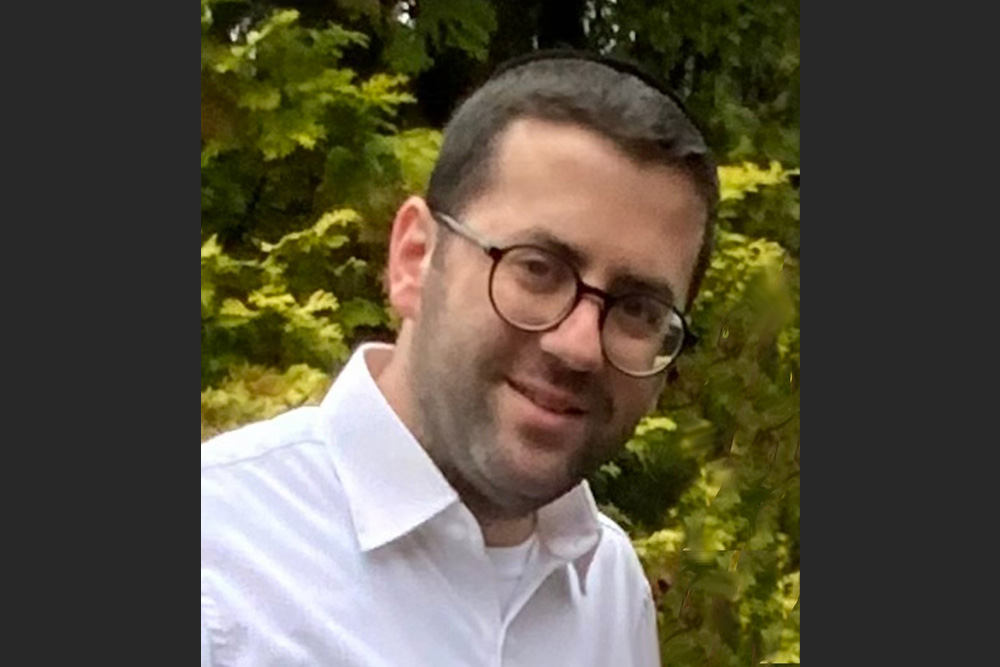 Benzi Wollman
Benzi WollmanThe project "They Were There for Us" was born from a "lack of ability to draw," as Wollman describes it, explaining: "During the outbreak of the war, I felt unable to continue my regular illustration work. My drawings are usually humorous, funny, and joyful. I just couldn’t keep drawing them as if nothing happened. For a week, I stopped all my work, including the Daily Page Illustrations. I drew nothing, and then, it simply burst – I sat down and began to draw one of the soldiers who had fallen in battle, and then another, and another. So a series of drawings ensued, and a memorial project was created."

To Draw, Cry, and Draw
Why did you choose to draw the soldiers specifically and not the murdered or kidnapped?
"I really struggled with this decision. Of course, I would like to draw everyone, but unfortunately, the numbers are so high, and I cannot do it. This disaster is so incomprehensible. One day I thought about the kidnapped, another day about the murdered, and the next about the soldiers. But ultimately, I felt that drawing the faces of those who fought for us was a way to contribute a small token and honor their actions. After all, they sacrificed themselves for the people of Israel. I felt the drawings were burning inside me, and thus I began to draw and draw. The first ten drawings came from me, and I chose which soldiers to draw, but later families approached me, and I started drawing based on requests. As of today, I have reached 90 soldier illustrations, with dozens more requests waiting. I truly hope to fulfill them all soon so that no family turns to me and doesn't receive a drawing."
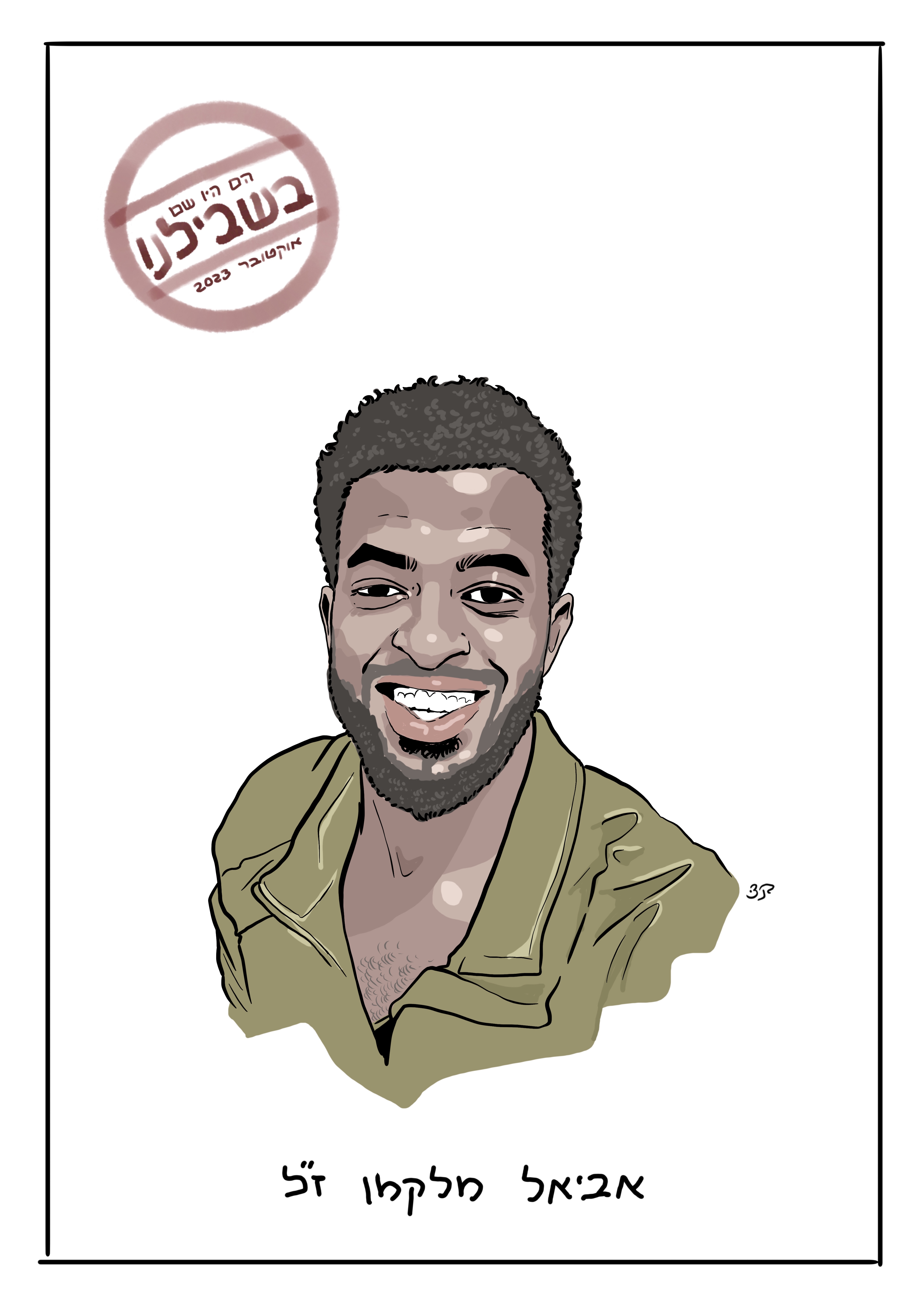
Do you know the story behind each soldier?
"Absolutely. Before I start working, I always strive to read about the character I'm drawing, and because a dialogue was established between me and the families, I also hear their stories. Many parents of soldiers and even their wives shared very special stories with me, and they sent additional pictures of the soldiers, both in civilian clothes and with their families. Some soldiers, after I drew them, I felt as though I knew them personally."
Can you tell about a soldier whose story particularly touched you?
"There are many such stories. However, there is one soldier whose story touched me so deeply, which also reflected in the drawing I made. While I generally draw soldiers up to the line of their shoulders and chest, for the soldier Aner Elaikim Shapira, of blessed memory, you also see his hand in the drawing, and it isn’t by chance. His story is amazing and inspiring. While he was hiding with dozens of others inside a secured room, terrorists threw grenades at them, and Aner grabbed grenade after grenade with his bare hands, throwing them back until the eighth grenade exploded in his hands, seriously injuring him. His story truly shook me, as many people afterward said they were saved due to his amazing initiative. But as I mentioned, he is not the only one. Through the drawings, I became acquainted with many more stories of our amazing soldiers, stories of heroism, courage, and daring, and not only in the army but also in civilian life. Some I read about, and others I heard through their families. It’s impossible to look at the pictures of these people without understanding that they are truly made of special stuff. Anyone who looks at them sees it; they are simply pictures that speak."
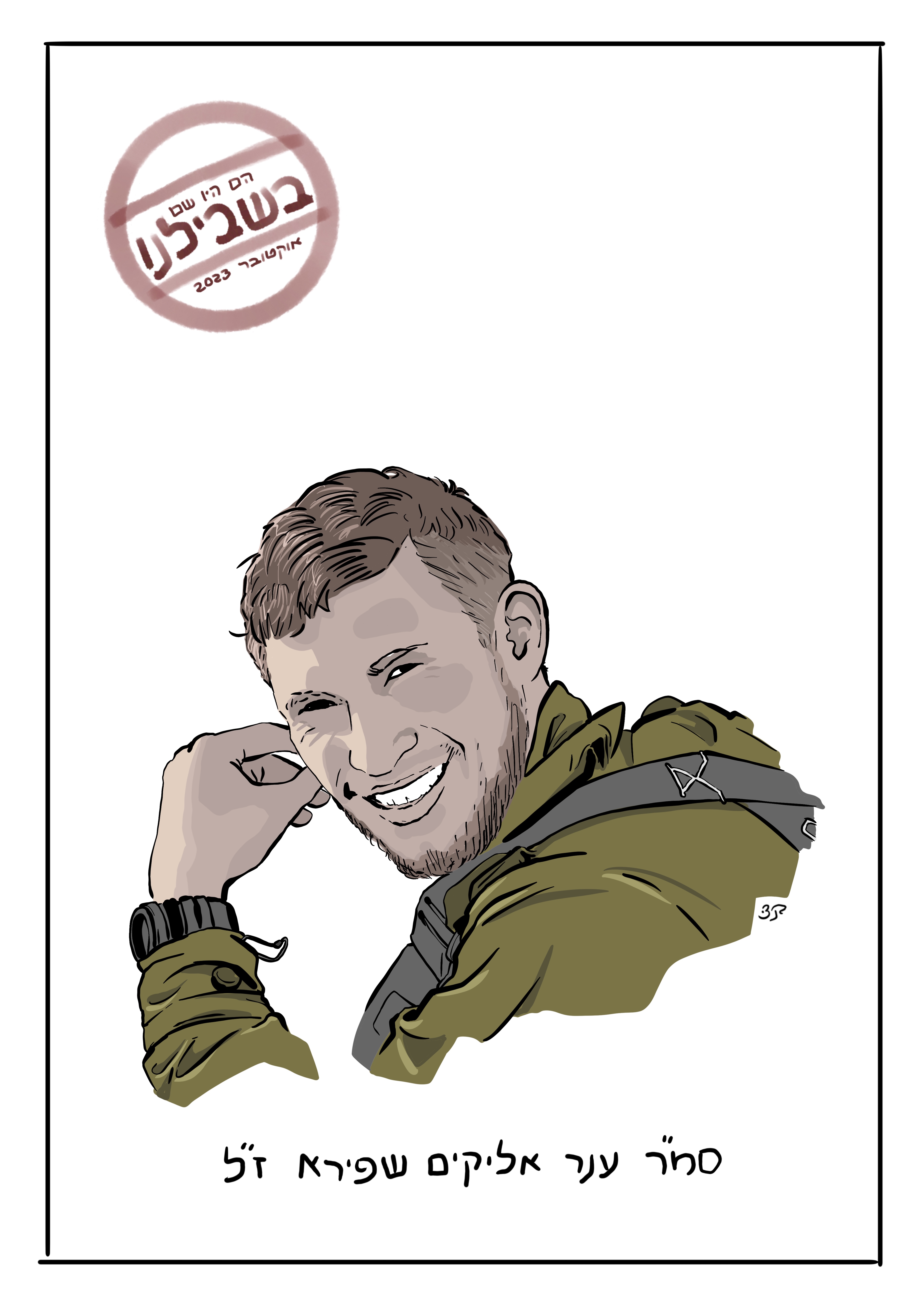
"To Contribute My Contribution"
How do families react when you present them with the pictures?
"The reactions are very emotional. There are families who sent me pictures afterward showing that they printed the drawing and placed candles around it at a shiva, some used the illustration for a memorial ceremony and even enlarged it to display on stage, and others asked me to make some changes to the drawing - to add the body or remove certain items. I strive to accommodate requests as much as possible. My goal is for families to feel that I truly drew their son as they know him. By the way, there were also families of victims who were not soldiers who contacted me, and I tried to draw them as well. I feel this is a mission."
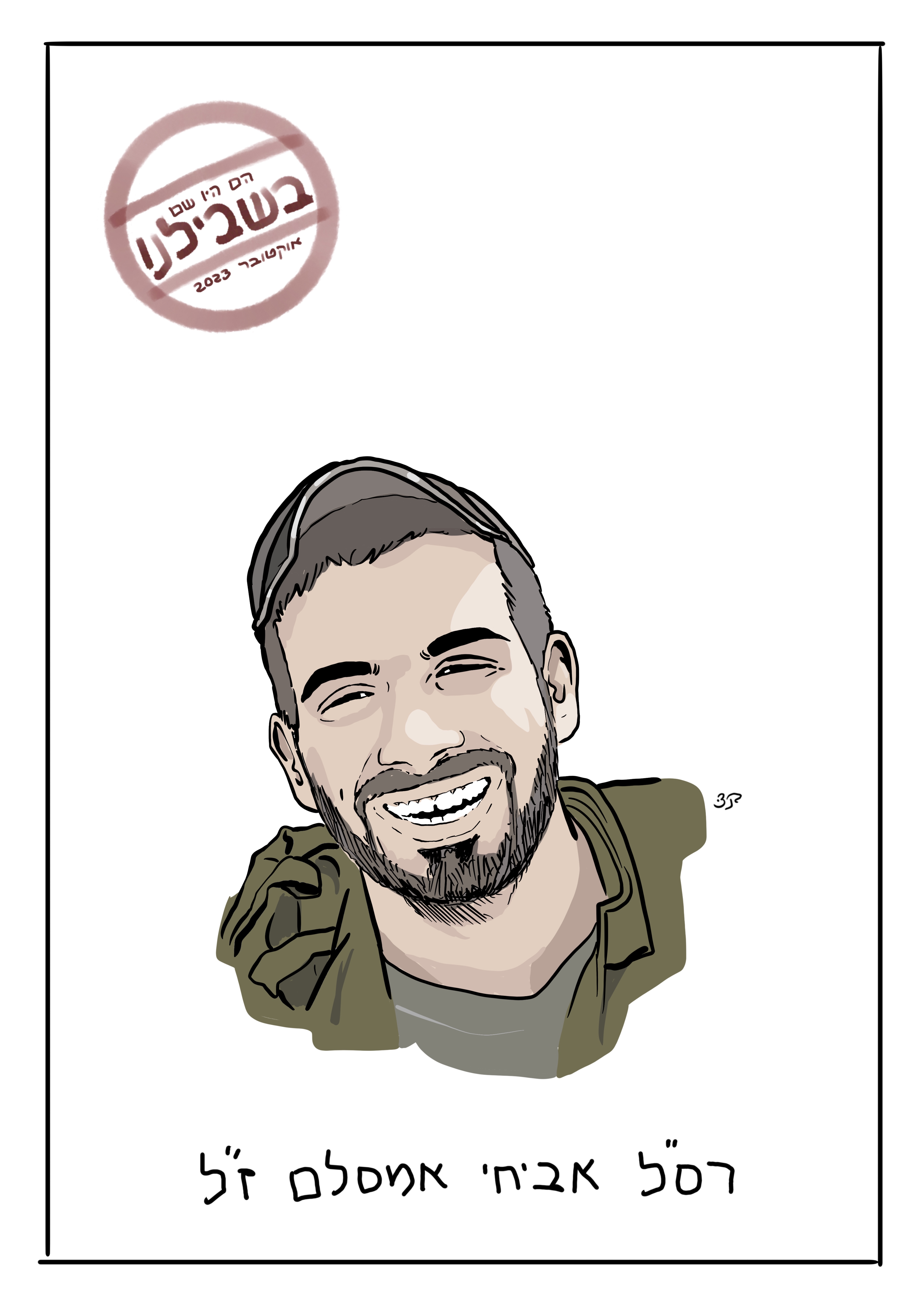
What do you plan to do with the illustrations? Are you thinking of publishing them collectively?
"For now, I don’t have such thoughts. Besides the families who receive the illustrations, I share them in my WhatsApp group, which has 4,000 followers, most of whom are Orthodox, as well as in my email group, which includes about 1,000 members. There are many people who tell me they enter the folder, see the drawings, and feel a special connection to the fighters, and as a result, more families are referred to me, which is perfectly fine with me. I have no other objective here. I just wanted to be a little involved and caring, and for me, this is my small participation in this hard and terrible war."
